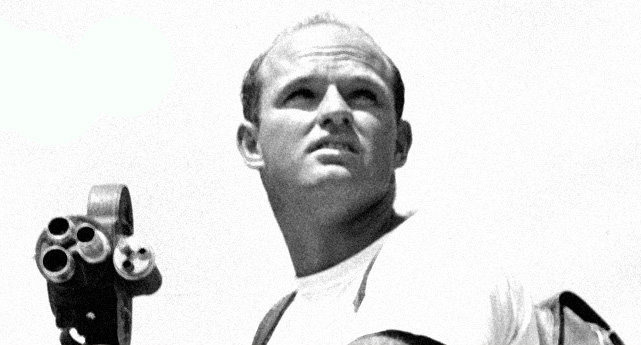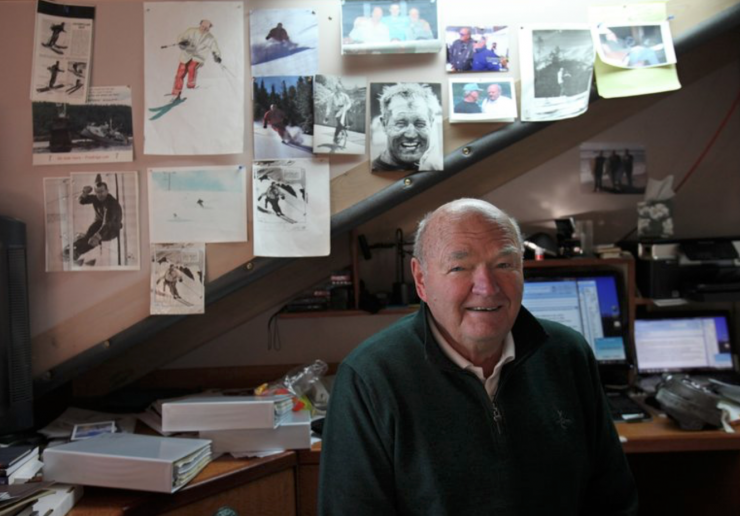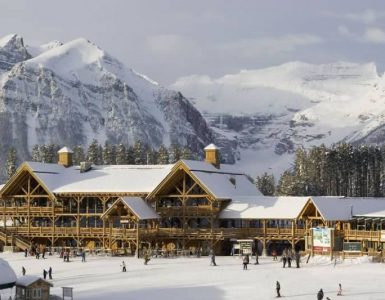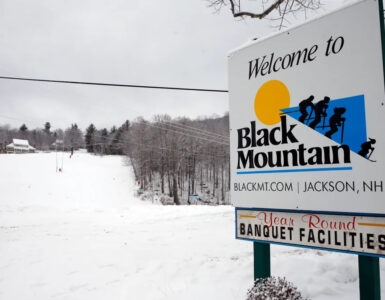When they can see their breath in the lowlands, hopped-up skiers and snowboarders get the itch: Snow is swirling in the highlands. A visit from their personal snow-sports Santa Claus can’t be far behind.
Warren Miller is bringing his annual ski film to town. Except he isn’t.
And the truth is, he hasn’t for a long time. It just looks that way.
“Warren Miller’s Wintervention,” which opens in the Puget Sound area Friday, is the 61st annual snow-sports film bearing the legendary filmmaker’s name. It’s also the sixth consecutive Warren Miller film that Miller had absolutely nothing to do with — and probably won’t even watch.
In fact, Miller, the man, has been competing with Warren Miller Entertainment, the film company, for the hearts, minds and dollars of snow fans beginning this November, with a personal appearance in Seattle.
It’s all the result of his long-simmering tiff with Warren Miller Entertainment, or WME, which boiled over into a lawsuit last year. The schism has split planet snow into three camps: people loyal to Miller (www.warrenmiller.net); people loyal to WME (www.warrenmiller.com); and a sizable majority who likely don’t even realize there’s a difference.
Sold in 1988
Miller, the person, sits by a crackling fire at his lodge-like Orcas Island home and shakes his head over the confusion.
“There’s something about the entertainment business that turns people whacko,” he says in that voice, still sounding a lot, at age 86, like it did in films a half century ago.
Miller’s unlikely movie career famously began in 1946, when he and a friend took up residence in a teardrop trailer in the Sun Valley resort parking lot, filming on-mountain exploits in 8mm. When his first movie, “Deep and Light,” debuted in Port Angeles and Seattle in 1950, he drove it to town himself, running his projector and reading the script live.
That voice, later laid down on movie soundtracks, injected the Miller trademarks — homespun humor and heartfelt passion — into films for 55 years, building a global cult following that still exists. So distinctive is the lilting Miller delivery that it ultimately became a valuable commodity.
But the ski-film icon hasn’t really owned his voice — or his name, face or persona, for that matter — for more than 20 years. It was all part of the package sold to his son, Kurt, in 1988, along with his film company. But Miller the younger later sold WME at a substantial profit to Time Warner, which sold it in 2007 to its current owners, the Bonnier Group, a Swedish-based media conglomerate that also owns a raft of snow-sports magazines.
Result: Instead of dealing with a family member on “Warren Miller” films through his golden years, as he intended, Miller found himself banging heads with corporate giants.
“Had I sold it to anybody besides my own son, looking for longevity, family ownership, that sort of stuff, I would have written the contract completely differently,” he says.
Ah, hindsight. Miller at the time was trying to take the rest of his life off, partially retiring as he neared 65. The arrangement: He would write and narrate the films, WME would handle the rest.
Simple premise
It might seem obvious that no less an expert than Warren Miller would have a good idea what made Warren Miller films click. The formula was simple: Re-create on film the agony/ecstasy experience of snow sports by mixing spectacular action photography from exotic locales with footage of epic crashes and hilarious chairlift bloopers — all of it carried along by Miller’s voice.
But amazingly, a clash emerged.
In broad terms, Miller’s films had a breezy, dry-witted style with equal appeal to beginners and experts, kids and adults. WME wanted more extreme action, set to a driving rock and hip-hop beat, and humor that, in more recent years, seemed more “Jackass” than slapstick.
Miller, relegated to employee status, got used to indignities: One of his early company managers told him to take voice lessons. But things reached a breaking point when he was told he no longer could make his usual cracks about certain unnamed ski resorts (such as Aspen) because they were potential film advertisers.
“I spent my whole career designing and creating movies that depended on box-office sales,” Miller says. “They did it based on how many ads they could stick in the movie.”
WME’s managing director, Max Bervy, a former Miller colleague, disputes that, as well as Miller’s characterization of the split. But he says the company still has “reverence” for its founder and strives to maintain the standard Miller set.
Bervy has found creative ways to do that. Miller’s last narration was for the 2004 film, “Impact.” But producers spliced clips of old narrations into subsequent films, “to confuse the public that I was still involved,” Miller says.
His voice has been absent altogether in the past several films.
Miller mostly stayed above the fray and held his tongue, trying once more to retire on Orcas, the place he loves most. But the creative spark in Miller, whose home office remains a beehive of partially finished books and other projects, never waned.
Last year, he pushed the envelope by lending That Voice to a competing ski film, Level 1 Production’s “Refresh,” sparking a WME lawsuit against that company. Miller joined in the defense.
The matter still isn’t settled, but a recent arbitration ruling finally offers clarity: Miller, as WME maintained, cannot narrate snow-sports films. But WME can’t prevent him from lending his name, likeness and voice to other products or personal endeavors.
Both sides are claiming victory, but the ruling looks increasingly like a public-relations debacle for WME: It has dragged the conflict into the public eye, prompting some angry Miller fans to urge a boycott of WME films.
His next turn
Miller, who no longer receives a dime from WME, wants to focus instead on launching Warren Miller, Phase 2.
A series of “An Evening With Warren Miller” lectures will kick off Nov. 21, in Seattle, with Miller dipping into that deep reservoir of storytelling material. It will find a receptive audience. More than just a legendary filmmaker, Miller is the closest thing the snow-sports world has to an oracle, having documented an entire movement from its birth.
He says he believes the allure of those earlier, real Warren Miller films was simple: It’s nostalgia — a yearning to relive the rush that came with those first magical, linked turns on snow, whether they came at age 5 or 85.
“I believe in my heart that that first turn you make on a pair of skis is your first taste of total freedom,” Miller says, echoing a classic movie line. “I showed that in my films.”
Don’t be surprised if Miller, who already has produced hundreds of nonski films, gets behind the camera again to show the world something else, in a style that truly is inimitable. Warren Miller no longer can make Warren Miller ski films. But he sees the rest of the world opening wide, Canada would be a natural for a 2011 tour.
And this old man, he’s not done.
“I think the picture that I would probably be proudest of,” he says, “is one that I might make some day.”













